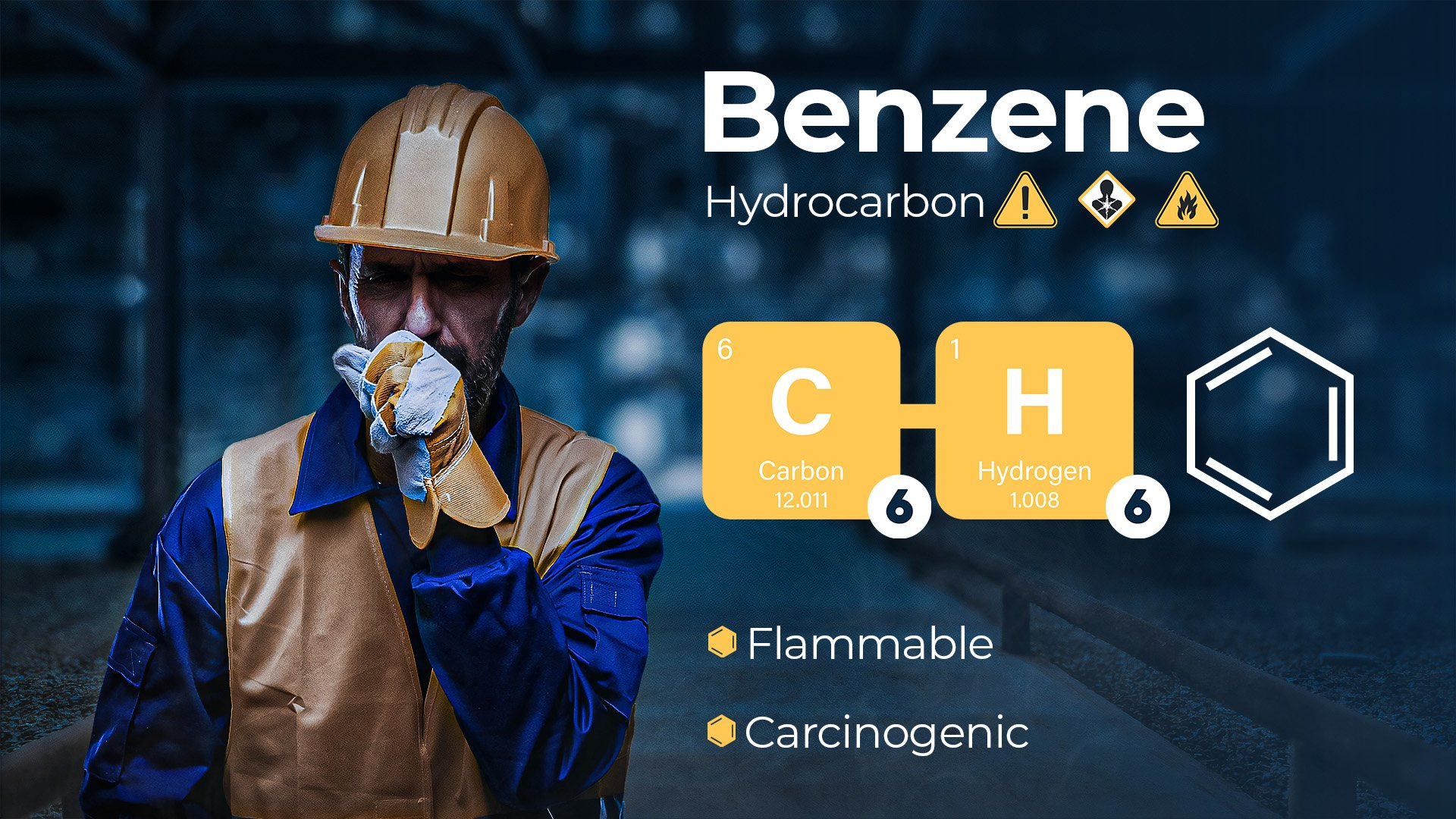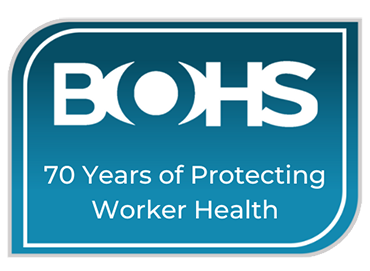What is Benzene?
Benzene is an important organic chemical compound and is one of the elementary petrochemicals. A carcinogen and highly flammable aromatic hydrocarbon and VOC, it is a major constituent of crude oil, an excellent fuel and a precursor used in the manufacture of many chemicals. It is characterised by a 'sweet' aroma and is a slightly tinged clear liquid when stored at room temperature.
Benzene is used extensively in industrial processes where its favourable properties and reactivity are used to create other more complex compounds and polymers. It was also once used in the cosmetics industry due to its sweet smell until its toxicity was fully realised.
What are the Health Effects of Benzene?
Classified by the WHO as a group one carcinogen, benzene is known to cause various forms of leukaemia. This is often the result of continual occupational exposure to the substance. The more direct effects of mild exposure can include headache, tiredness, nausea and dizziness. If exposure is significant, swelling of the airways and a build-up of fluid in the lungs may also occur.
One of the notable detrimental effects benzene has on the human body is causing damage to white blood cells and bone marrow, increasing the risk of anaemia and infection.
Who is most at risk from Benzene?
Benzene is a common pollutant and exists in small amounts in the global atmosphere, most often at a level not considered to be dangerous.
Workers might be exposed to benzene during certain jobs, for example, in oil refineries, chemical and petrochemical plants, coke works and foundries, as well as the storage, distribution, and use of petrol or benzene itself.
Any occupation that makes use of large amounts of solvents, paints and dyes or is consistently based near vehicles and busy roads will also have a heightened risk of overexposure.
In a gas/vapour state, benzene is heavier than air which can lead to reservoirs pooling in lower internal spaces. To manage this risk, many indoor facilities where benzene is present will install fixed gas detection systems with sensors mounted at the correct height to monitor specific benzene concentrations.
Benzene can be absorbed by the human body if air containing benzene vapour is breathed in, through the skin or if swallowed.
Is there a legal exposure limit for Benzene?
In the UK, the Control of Substances Hazardous to Health Regulations 2002 (COSHH) requires an employer to reduce your exposure to benzene so far as is reasonably practicable, and in any case, below the workplace exposure limit (WEL) assigned for benzene of 1 part per million (ppm) of air averaged over 8 hours.
How can Benzene Risk be Limited or Eliminated?
Other requirements of COSHH 2022 include:
- Assess risks to health and identify precautions needed for protection.
- Prevention of exposure to benzene, or where this cannot reasonably be done, adequately control exposure to acceptable limits.
- Maintain all fume and dust controls in efficient working order.
- Find out how much benzene workers are exposed to, normally through a monitoring programme, and tell workers the results.
- Arrange any health checks that are needed.
- Inform, instruct and train all employees who may be exposed to benzene.
Other preventative measures include reducing the number of chemicals stored on a site, making sure containers are appropriate and clearly marked, reducing how many individual employees work within contaminated areas, rotating workers so each is exposed less frequently and demarcation of risk areas with clear and adequate use of safety signage.
In terms of measurement and monitoring, there are several products on the market capable of specifically detecting benzene with options including wearable, portable or fixed systems.
Contact Shawcity for any further information or to arrange a free site survey to discuss the benzene monitoring options available to you: Tel: 01367 899553 or email: solutions@shawcity.co.uk.











